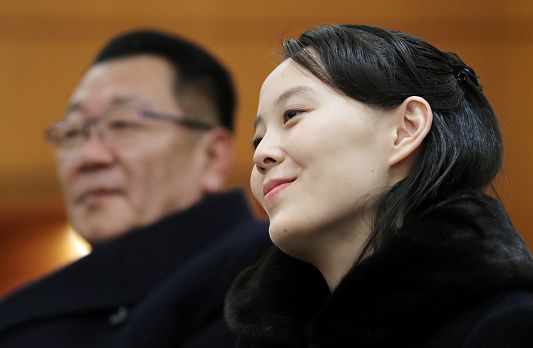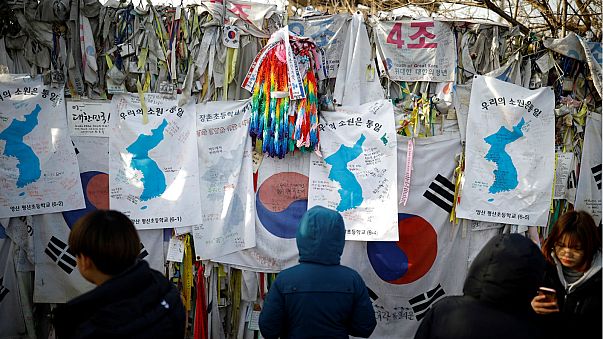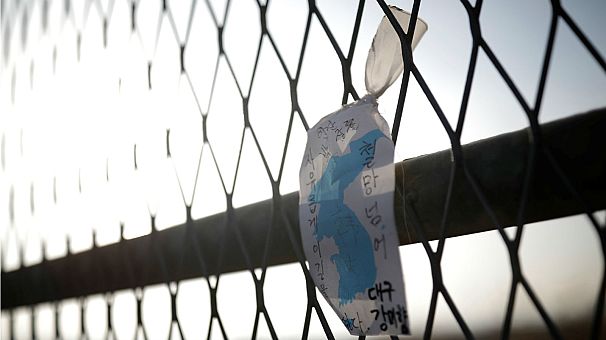 Kim Jong Un’s younger sister Kim Yo Jong meets South Korean officials in Incheon, South Korea. Yonhap via REUTERS
Kim Jong Un’s younger sister Kim Yo Jong meets South Korean officials in Incheon, South Korea. Yonhap via REUTERSThe issue at stake is whether South Korean President Moon Jae-in can make a successful transition from a peaceful Olympics to a lasting Olympic peace that can lead to improved inter-Korean relations, a resumption of Pyongyang-Washington bilateral talks, and eventually a breakthrough to the stalled North Korean nuclear issue.
The root cause of the current quagmire comes from North Korea’s unruly pursuit of its nuclear ambitions. Nuclear weapons for Pyongyang are a source of national pride and international prestige and not just a reaction to external security threats. In general this is something a leading expert in the field, Dr Jim Walsh from the MIT, has proven in his studies about nuclear powers, and it must be part of the truth for North Korea too.
Yet, North Korea’s foreign minister Ri Yong Ho claims in his speech at the ASEAN Regional Forum that its nuclear program is a rational response to US aggressive behaviour. What makes North Korean nuclear deterrence rational for Pyongyang is, according to the foreign minister:
the fact that US has actually used nuclear weapons against civilians
that it has placed nuclear weapons on the Korean Peninsula, that it keeps on practicing “war operations” that simulate regime change
that it has changed regimes in several authoritarian non-nuclear countries
and that it has refused the commitment to non-use of nuclear weapons against countries with no nuclear weapons.
How to resolve the standoff
Yet, regardless of whether North Korea’s nuclear provocations are driven by excessive national pride or the need to deter, there are strategic prescriptions that both interpretations support.
KCNA via REUTERS
Kim Jong Un provides guidance on a nuclear weapons program. KCNA via REUTERS
First, it is essential for the US to avoid demonizing the North. By offering only demonic identities for North Korea the US cannot expect cooperative and peaceful compromises from it: demons do not compromise. Furthermore, demonization strengthens the North Korean narrative of the need to defend a country’s honour and safety by means of nuclear deterrence.
To produce North Korean compromises, incentives and disincentives should be flexibly combined and presented. Frankness, two-way understanding, and trust-building should be the basic guiding principle of a diplomatic approach. It must speak its minds, but it should also hear out Pyongyang in order to find mutually acceptable solutions.
Second, only practical and realistic dialogue can bring about a solution without unacceptable loss of life. Negotiated solutions only can offer North Korea alternatives that could rescue its national pride and security better than continued nuclear deterrence.
Dialogue should be possible given the business-minded approach of the US president and his team. President Trump has repeatedly given support to President Moon Jae-in’s effort to initiate dialogue on the Korean Peninsula. North Korea, too, has given veiled support to dialogue on North Korea’s nuclear weapons assuming there was a reversal in the American ‘hostile policy and nuclear threat to the DPRK’. Therefore, a mechanism for dialogue should be restored.
In our opinion, the Six-Party Talks are still the best venue for negotiation. Concerned parties can have bilateral, trilateral, four-party, and five-party talks within the six-party framework. In addition, the September 19 joint statement is still the best diplomatic document for denuclearizing North Korea. Deliberating on alternative mechanisms for dialogue and negotiation will be time-consuming.






Leave A Comment